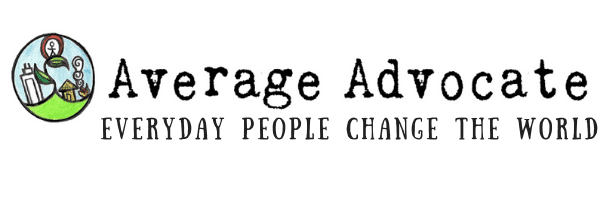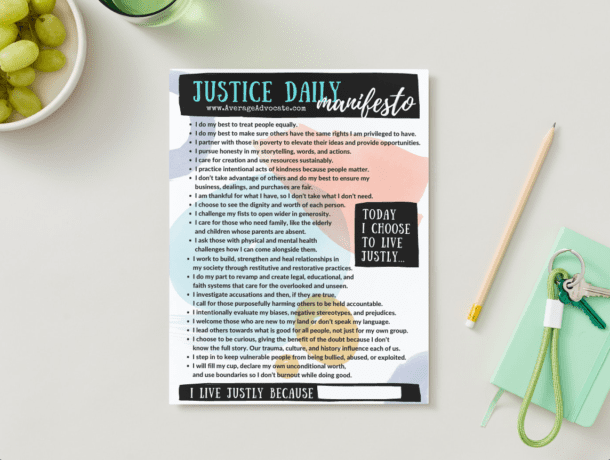A Sexy Cause
On the 21st of each month, Steph at Encouraged in Heart has been writing a series on the injustice of Human Trafficking, or modern slavery, in support of a great organization, the A21 Campaign. As part of this, she has asked me to share with you on what Sex Trafficking actually is from the perspective of someone fighting human trafficking from Northern Virginia, in the suburbs of Washington D.C.
Sex Trafficking is a sexy cause – it is just so horrific that everyone want’s to do something about it. Have you seen the movie Taken? Trade? or the Whistleblower? These recent fiction box-office movies give us a glimpse into the horrific world of sex trafficking.
Of the 20-30 million slaves in the world today, victims of sex trafficking are actually far from the majority of modern slaves. There are all types of forced labor-slaves: brick making, picking produce, harvesting chocolate, working as servants. These people might still be sexually abused or raped, but they are not actually considered sex trafficking victims. To qualify as a victim of sex trafficking, an individual must be “owned” through forced, fraud, or coercion and then sold commercially in some way for sex.
Sadly, the sex industry is huge, partially in thanks to pornography which fuels the demand for a better “fix.” People are sold through escort services, massage parlors, strip clubs, brothels, truck stops, street prostitution and the internet. This can be as on a small scale, with a trafficker charging some of his buddies to use a girl, or it can be a big business.
Sex-tourism itself is a major issue. Girls from less affluent nations in Eastern Europe are trafficked to Western European nations, like the red-light district in Holland or brothels in Italy. Southeast Asia is renown for hosting tourists around the globe to enjoy in cheap sex, where they can rent a “girlfriend” for a week and visit brothels for young girls. All over the world , there are numerous locations that are infamous for various types of sex-trafficking.
 The result is that human trafficking if the fastest growing crime, and had has already become the 2nd largest type of organized crime in the world. Sex trafficking generates about 28 billion a year! The reason? Drugs and weapons are sold just once. But a human body can be sold over, and over, and over again…until that body is used up.
The result is that human trafficking if the fastest growing crime, and had has already become the 2nd largest type of organized crime in the world. Sex trafficking generates about 28 billion a year! The reason? Drugs and weapons are sold just once. But a human body can be sold over, and over, and over again…until that body is used up.
Yes, I realize that is crude. And what is even worse is that at least ½ of these victims are minors. Horrifically, sometimes these girls are only as old as my kindergartener! In our country, if you are prostituted as a minor, even without force, fraud or coercion present, you are still considered a victim of sex trafficking. This comes from the belief that children are too young to make a healthy decision about their bodies.
Although sex trafficking is a global issue, it is not limited to the other places in the world. The United States might have passed anti-trafficking laws over ten years ago, but not even all the states have adopted the most basic laws to make trafficking illegal. These laws are needed to train law enforcement and social services to recognize victims, prosecute traffickers, and provide the needed victim services.
In rich countries, like ours, sex trafficking is the common form of human trafficking. I am part of our local Human Trafficking Task Force, where we recently confirmed that girls are being sold for sex through gangs in my own Loudoun County. We’ve been working hard to get all the needed parties to work together to end modern slavery in our neighborhoods.
But this can be difficult, partially because victims of all types of human trafficking don’t “look” like slaves. Victims of sex-trafficking in the United States are actually often what we consider as the average prostitute. They are often the ones prosecuted instead of their “clients” or traffickers. A prostitute might be able to walk down the street, but that doesn’t mean she isn’t owned. The more we dive into the issue, the more we are finding that many prostitutes are coerced, deceived, threatened, and abused into the life of a prostitute, controlled and even in bondage-debt to her pimp. Although some people willingly work for the sex industry, a huge portion of sex workers in the US don’t know how to escape.
Facts on Sex Trafficking and Prostitution in the USA:
- The average age someone enters prostitution in the USA is between 11 and 14 years old.
- Those in prostitution are usually abandoned, or are runaways which have been previously abused.
- Within the first 48 hours of being out on the street, ⅓ of minors are lured into prostitution.
- Traffickers and pimps activity seek vulnerable teens to manipulate both in and out of the USA.
- There are at minimum 100,000 children in the USA forced into prostitution or pornography yearly.
- A child is trafficked for sexual purposes every 30 seconds.
- Approximately 80% percent of victims moved across borders are female.
- About 50% of those trafficked over borders are minors.
These are the typical stories of sex trafficking victims:
A girl has a vulnerable situation at home, and gets asked out by a guy or into a gang where she is told she is loved and accepted. Anywhere from months to hours later, the guy begins to abuse her or threaten her or her family/friends. She is very young, and believes his lies. Once he controls her, he begins to send her out to meet a certain quota or else suffer serious consequences. She believes there is no way of escape. When she tries to stand up to her trafficker, she is beaten, abused, drugged, raped again, threatened with death while being told she has no worth to anyone else but her pimp.
A girl (or her family) who desires money is offered a decent job in another location. The girl takes a loan from the job recruiter to take her to her new position. On the way, the recruiter takes her passport, and lets her be raped, saying she has no more value as a person. She becomes dependent on the trafficker to survive in a place she is unfamiliar with. The trafficker says that she owes him/her for her travel costs and expenses. The trafficker continues to threaten her, while selling her until she eventually dies, is murdered or escapes.
Deeper Issues
These might be stereotypes, but most sex trafficking stories are only variations of these ones. I believe sex trafficking is the most brutal of type of slavery. Not only is their body owned, but their sexual identity is stolen. Considering that God designed sex to be pure, safe, mutually enjoyable, and an experience shared in love, I can only imagine how hurtful sex is when it oppresses, lies, tears-apart, and abuses.
Oppression begins when just a normal person is too selfish to consider that their actions might hurt someone. Most people aren’t born to be pimps or johns. It is a result of slipping personal or cultural morals- losing the value of life, women, and the sanctity of sex. No matter how many times you rescue people from sex trafficking, others will be pulled back into it as long as there is a demand for sex outside of healthy relationships.
Is this new to you? Are any of your previous views challenged in light of this information?
Learn More About Sex Trafficking:
Watch: Nefarious: Merchant of Souls or Sex and Money
Read: More Than Rice, Sold, Not for Sale, The Natashas
Study: Sex Trafficking Resource Pack
Ideas For Action:
Make sure laws are passed in your state! Look at this map to find your state’s ratings. Then check out this post to help you know what to do: Action: Letting Your Leaders Know You Don’t Like Slavery.
If you live in locally, “Like” the Northern Viriginia Human Trafficking Initiative Page to stay up with what is going on here and how you can help.
Consider donating to A21 Campaign every 21st of the month along with Steph and those following Encouraged in Heart.
Start buying gifts that give former victims of trafficking employment. You can find such gifts from My Charity Gift Market (free shipping!) or look at the 2012 Ethical Holiday Shopping Guide for ideas.
Thank you again, Steph, for asking me to post on Encouraged in Heart!
Other Posts in the 21-21-21 Series on Encouraged in Heart:
Her Name is Violet and Natalia
Something
References:
A21 Campaign. (2012).The Problem. http://www.thea21campaign.org/the-problem.php
Bureau of Justice Statistics. (2011, September). Human Trafficking/Trafficking In Persons. http://bjs.ojp.usdoj.gov/index.cfm?ty=tp&tid=40
FBI. (2012, March). Human Trafficking. http://www.fbi.gov/stats-services/publications/law-enforcement-bulletin/march_2011/human_sex_trafficking
Love 146. (2012). Educational Resources on Human Trafficking. http://www.love146.org/resources/trafficking
Polaris Project. (2012). Sex Trafficking in the US. http://www.polarisproject.org/human-trafficking/sex-trafficking-in-the-us











Trackbacks/Pingbacks